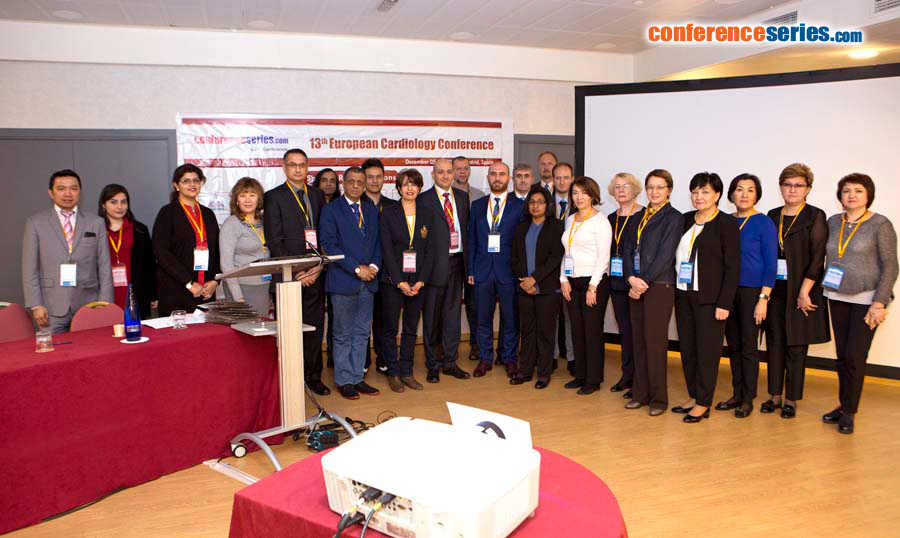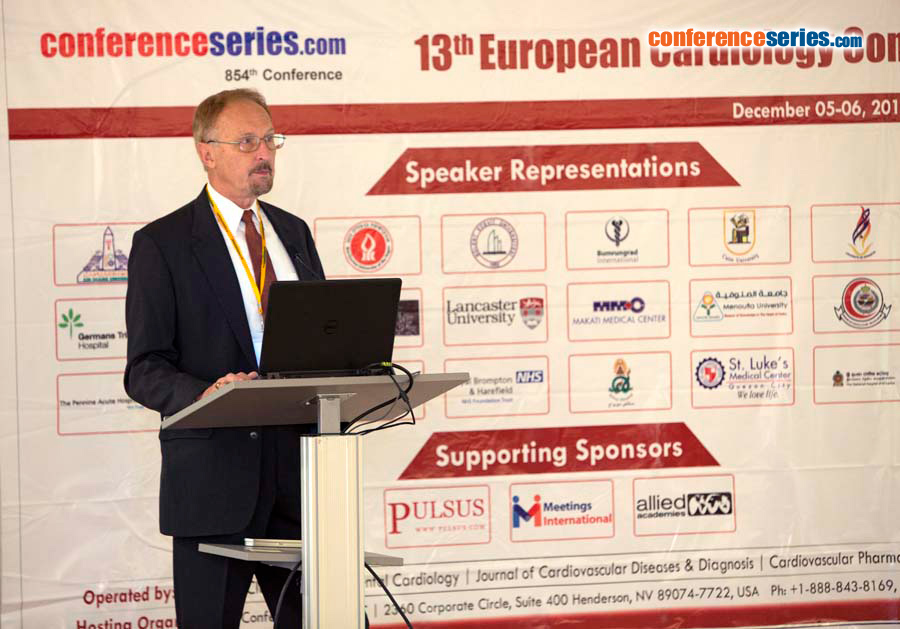
Peter P Karpawich
Wayne State University, USA
Title: Congenital /structural heart into the 21st century: Advances in diagnosis and intervention
Biography
Biography: Peter P Karpawich
Abstract
A repaired congenital heart defect (CHD) does not equate to a normal heart. With time, residual or new patient (pt) age-related issues including valve stenosis or insufficiency, changes in vessel dimensions, stunts, and arrhythmias will require continued intervention and medical management. Early heart failure, based solely on cardiac anatomy, remains an important concern for which there are evolving therapies. The newly coined term, ”Structural Heart” as it applies to valve and vessel issues, other than coronary arteries, often is only a substitute term for CHD among older patients. At the current time, there are about 2 million pts > 18 years of age in North America and Europe alone, with repaired CHD. A number far greater than children with CHD. The recognition of this increasing and evolving patient population data base has prompted the American Board of Internal Medicine to create a new sub-specialty training program and Board examination in Adult Congenital Heart Disease (ACHD). Comparable recognition in England utilizes their Grown-up Congenital Heart (GUCH) programs. The purpose of this presentation is to identify the scope of the problem facing clinicians today and to illustrate current advances in recognition and therapy.
In the field of anatomical diagnosis, non-invasive imaging now includes standard 2D and 3D ECHO/Doppler studies as well as MRI/CT scans. Recently, physicians have been aided by the development of 3D printed soft tissue models of precise. Considering the complexity of certain repaired CHD, these precise anatomical models allow pre-operative planning and familiarization with cardiac/vascular structures as well as patient education. Since repeat open thoracotomies are often technically challenging, expensive as well as associated with high patient morbidities, non-surgical interventions have been greatly aided by use of vascular-accessed devices to open stenotic valves and vessels by use of various balloon catheters or stents, both covered and expandable. A major paradigm shift has evolved over the past ten years with more interventional cardiac catheterization laboratory procedures now being performed indeference to repeat surgical operations. At present, about 70% of residual CHD problems are now be amenable to interventional catheterizations, including insertion of valves.
Certain CHD may intrinsically predispose to arrhythmias and the addition of prior surgical operations leaves residual scars which only augment the arrhythmia burden among CHD pts. Ablation mapping with non-fluoroscopic techniques has greatly reduced radiation exposure to patients and catheterization lab personnel. Non-fluoroscopic procedures eliminate the need for lead aprons, which decreases orthopedic problems commonly seen among electrophysiologists and lab technicians. Although not included in current published “guidelines’, resynchronization pacing for heart failure has been applied to CHD pts with variable success.om
ACHD is an evolving field and will continue to expand as more children survive to adulthood from what previously had been fatal heart defects due to improvements in interventional procedures. Continued knowledge and awareness in the field will be required by all involved in patient care.






